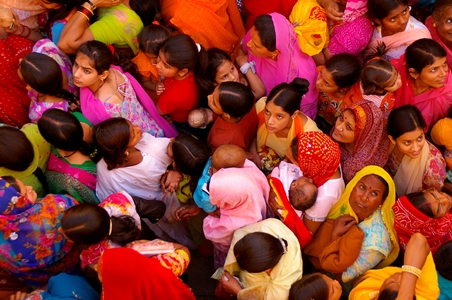Responsible Employer
10 things you didn’t know
…about the world’s population
…about the world’s population

- According to the World Population Prospects: The 2015 Revision, at the end of the century the population will be about 11.2 billion, with a readjustment of the previous estimates. Our global population growth rate is slowing down. However, the current 7.4 billion (1.6 in the early 1900s) are expected to reach 8.5 billion by 2030 and 9.7 billion in 2050.
- Always according to UN, during 2015-2050, half of the world’s population growth is expected to be concentrated in nine countries: India, Nigeria, Pakistan, Democratic Republic of the Congo, Ethiopia, United Republic of Tanzania, United States of America, Indonesia and Uganda. Only one of these is a Western country. This means that Nigerians are expected to surpass the Americans by about 2050. And India is expected to surpass China, the current bear. While Africe – where fertility levels remain high, despite declining – will account for more than half of the world’s population growth.
- There are more young people in the world than ever before. There are about 1.8 billion people between 10 and 24, especially in the world’s 48 least developed countries: an extraordinary potential for economic growth, too often hindered by poverty, discrimination or lack of information.
- There are also more people migrating than ever before. In 2013, some 232 million people were international migrants, up from 175 million in 2000. Half of them were living in just 10 countries and the top five destinations - according to data from the UN’s Population Division - are: the United States, the Russian Federation, Germany, Saudi Arabia and the United Arab Emirates. Despite this, the movement between the developing countries, called ‘South-South migration', is more common.
- Women in sub-Saharan Africa are as likely to die in pregnancy as women in the nineteenth-century England described by Charles Dickens. In fact, complications in pregnancy and birth are the second leading killer of adolescent girls in developing countries. In the same countries, about 225 million women want to avoid pregnancy but are not using modern contraceptives.

- Around 1 billion people live in extreme poverty nowadays, with less than $1.90 per day. The rate is still high, but down sharply if you think that in 1981 more than 50% of the world population lived in absolute poverty and this is now down to about 14%. The share of people in poverty is highest in Madagascar (82%), the Democratic Republic of Congo (77%) and Burundi (78%).
- In 1950, 44% of the world population had a total fertility of 6 or more children, while nowadays 48% have less than 2.1 children. The increase in living standards and the improvements in health determined a robust decline in child mortality, but the exponential increase did not last long, and after the boom of the '60s, the low birth rate began to balance the lower mortality and the higher life expectancy.
- The country with the highest life expectancy isn’t Japan (second with a life expectancy of 82.13 years for men and 88.99 for women) but the Principality of Monaco (85.66 for men, 93.64 for women). Italy is third (83,80 and 85,82), according to the CIA World Factbook list (2014), a publication that considers only nations with at least 100,000 inhabitants. Last in the ranking are Guinea-Bissau, South Africa and Chad, all of them with an average expectancy of just 49 years. Nowadays, there are no countries with a lower life expectancy than the country with the highest life expectancy in 1800.
- More than half the world’s population is urban. And urbanization will continue for many years to come. Asia is home to half of the world’s urban population and 66 out of the 100 fastest-growing urban areas, 33 of which are in China alone. Africa has a larger urban population than North America or Western Europe, and about a third of the world's urban population lives in slums (in Africa even 60%). But the percentage is going to grow. Nearly 10% of the urban population is found in megacities (each with more than 10 million people). The three most populous cities in the world are – in order – Tokyo, Jakarta and Delhi.
- We can access at any time to a running tally of the current world population including births, deaths and percentage increase. And here you can find updated maps with various indicators, including fertility rate, life expectancy and urbanization.
